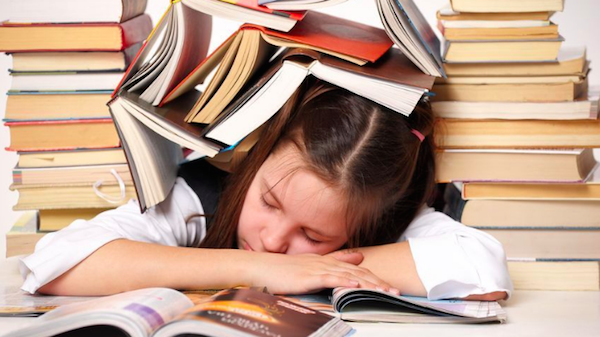Trắc nghiệm Tiếng Anh 9 Unit 9 Reading có đáp án năm 2021 - 2022
Bộ câu hỏi trắc nghiệm Tiếng Anh lớp 9 có đáp án, chọn lọc năm 2021 – 2022 mới nhất gồm các câu hỏi trắc nghiệm đầy đủ các mức độ nhận biết, thông hiểu, vận dụng, vận dung cao. Hy vọng với tài liệu trắc nghiệm Tiếng Anh lớp 9 sẽ giúp học sinh củng cố kiến thức, ôn tập và đạt điểm cao trong các bài thi trắc nghiệm môn Tiếng Anh 9
Trắc nghiệm Tiếng Anh 9 Unit 9 Reading
Bài 1. Read the passage and check True or False.
Many years ago, people used to buy what they needed from stores and markets. Now where would you go if you wanted to buy all these goods at one time? Ask anybody, and he would probably say "you'd better go to the supermarket". A supermarket is a special kind of market. It is usually much larger than an ordinary store. In a supermarket, you can buy all kinds of food, household, products and daily necessities. In a store, a customer is served by a storekeeper but in a supermarket, the goods are arranged on rows of shelves along the aisles. The prices are printed on small labels on the goods. A customer gets goods he needs from the shelves. This is known as self-service. Of course, you can always ask for help from the supermarket shop assistants.
When you enter a supermarket, you take a basket to carry the goods you will buy. If you want to buy a lot of things, you will need a trolley. A trolley is like a large basket on wheels. You can push it along the aisles, choose what you want from the shelves and put it into your trolley. A supermarket often provides a more comfortable environment for shopping than a market that is usually wet and dirty. As a result, many people usually buy more goods than they need when they visit a supermarket.
Question 1. Many years ago, people used to buy what they need from supermarkets.
A. True B. False
Đáp án: B
Thông tin: Many years ago, people used to buy what they needed from stores and markets.
Dịch: Nhiều năm trước, mọi người thường mua những gì họ cần từ các cửa hàng và chợ.
Question 1. Many years ago, people used to buy what they need from supermarkets.
A. True B. False
Đáp án: B
Thông tin: Many years ago, people used to buy what they needed from stores and markets.
Dịch: Nhiều năm trước, mọi người thường mua những gì họ cần từ các cửa hàng và chợ.
Question 2. We go to a supermarket if we want to buy different kinds of goods at one time.
A. True B. False
Đáp án: A
Thông tin: Now where would you go if you wanted to buy all these goods at one time? Ask anybody, and he would probably say "you'd better go to the supermarket".
Dịch: Bây giờ bạn sẽ đi đâu nếu bạn muốn mua tất cả những hàng hóa này cùng một lúc? Hỏi bất cứ ai, và anh ta có thể sẽ nói "tốt hơn là bạn nên đi siêu thị".
Question 3. Now people buy all they need only from stores and markets.
A. True B. False
Đáp án: B
Thông tin: In a supermarket, you can buy all kinds of food, household, products and daily necessities.
Dịch: Trong một siêu thị, bạn có thể mua tất cả các loại thực phẩm, hộ gia đình, sản phẩm và nhu yếu phẩm hàng ngày.
Question 4. An assistant in a supermarket will serve you if you ask for help.
A. True B. False
Đáp án: A
Thông tin: Of course, you can always ask for help from the supermarket shop assistants.
Dịch: Tất nhiên, bạn luôn có thể yêu cầu trợ giúp từ các trợ lý cửa hàng siêu thị.
Question 5. The prices of the goods are written on small labels all over the shelves.
A. True B. False
Đáp án: B
Thông tin: The prices are printed on small labels on the goods.
Dịch: Giá được in trên nhãn nhỏ trên hàng hóa.
Question 6. It is comfortable and convenient to shop at a supermarket.
A. True B. False
Đáp án: A
Thông tin: A supermarket often provides a more comfortable environment for shopping than a market that is usually wet and dirty.
Dịch: Một siêu thị thường cung cấp một môi trường mua sắm thoải mái hơn so với một thị trường thường ẩm ướt và bẩn thỉu.
Question 7. You will need a basket if you want to buy a lot of things.
A. True B. False
Đáp án: B
Thông tin: When you enter a supermarket, you take a basket to carry the goods you will buy. If you want to buy a lot of things, you will need a trolley.
Dịch: Khi bạn vào một siêu thị, bạn lấy một cái giỏ để mang theo hàng hóa bạn sẽ mua. Nếu bạn muốn mua nhiều thứ, bạn sẽ cần một chiếc xe đẩy.
Question 8. A trolley carries you around the supermarket.
A. True B. False
Đáp án: A
Thông tin: A trolley is like a large basket on wheels. You can push it along the aisles, choose what you want from the shelves and put it into your trolley.
Dịch: Một xe đẩy giống như một cái giỏ lớn trên bánh xe. Bạn có thể đẩy nó dọc theo lối đi, chọn những gì bạn muốn từ kệ và đặt nó vào xe đẩy của bạn.
Question 9. Customers get the goods they need from the shelves.
A. True B. False
Đáp án: A
Thông tin: In a store, a customer is served by a storekeeper but in a supermarket, the goods are arranged on rows of shelves along the aisles.
Dịch: Trong một cửa hàng, một khách hàng được phục vụ bởi một thủ kho nhưng trong một siêu thị, hàng hóa được sắp xếp trên các hàng kệ dọc theo lối đi.
Question 10. People buy a lot of goods when they go to supermarkets.
A. True B. False
Đáp án: A
Thông tin: As a result, many people usually buy more goods than they need when they visit a supermarket.
Dịch: Do đó, nhiều người thường mua nhiều hàng hóa hơn họ cần khi họ đến siêu thị.

Bài 2. Read the text then choose the best answer to fill in the blank.
I often hear or read about “natural disasters” – the eruption of Mount St. Helen, a volcano in the state of Washington; Hurricane Andrew in Florida; the floods in the American Midwest; terrible all over the world; huge fires; and so on and so on. But I’ll never forget my first personal experience with the strangeness of nature – “the London Killer Fog” of 1952. It began on Thursday, December 4, when a high – pressure system (warm air) covered southern England. With the freezing – cold air below, heavy fog formed. Pollution from factories, cars, and coal stoves mixed with the fog. The humidity was terrible high, there was no breeze at all. Traffic (cars, trains, and boats) stopped. People couldn’t see, and some walked onto the railroad tracks or into the river. It was hard to breathe, and many people got sick. Finally, on Tuesday, December 9, the wind came and the fog went away. But after that, even more people got sick. Many of them died.
Question 1. Which “natural disaster” isn’t mentioned in the text?
A. a volcano B. a flood C. a hurricane D. a tornado
Đáp án: D
Thông tin: I often hear or read about “natural disasters” – the eruption of Mount St. Helen, a volcano in the state of Washington; Hurricane Andrew in Florida; the floods in the American Midwest; terrible all over the world; huge fires; and so on and so on.
Dịch: Tôi thường nghe hoặc đọc về những thảm họa thiên nhiên của người Hồi giáo - vụ phun trào của Núi St. Helen, một ngọn núi lửa ở bang Washington; Bão Andrew ở Florida; lũ lụt ở vùng Trung Tây nước Mỹ; khủng khiếp trên toàn thế giới; đám cháy lớn; Và vân vân.
Question 2. What is his unforgettable personal experience?
A. the London killer. B. the heavy fog in London in 1952.
C. the strangeness of nature. D. a high – pressure system.
Đáp án: B
Thông tin: But I’ll never forget my first personal experience with the strangeness of nature – “the London Killer Fog” of 1952.
Dịch: Nhưng tôi không bao giờ quên trải nghiệm cá nhân đầu tiên của mình với sự kỳ lạ của thiên nhiên - Hồi giáo London Killer Fog năm 1952.
Question 3. How long did the “London Killer Fog” last?
A. for four days. B. for five days. C. for six days. D. for a week.
Đáp án: C
Thông tin: It began on Thursday, December 4 …. Finally, on Tuesday, December 9 ….
Dịch: Nó bắt đầu vào thứ năm, ngày 4 tháng 12……. Cuối cùng, vào thứ ba, ngày 9 tháng 12. ..
Question 4. What didn’t happen during the time of “London Killer Fog”?
A. heavy rain. B. humidity. C. pollution. D. heavy fog.
Đáp án: A
Thông tin: With the freezing – cold air below, heavy fog formed. Pollution from factories, cars, and coal stoves mixed with the fog. The humidity was terrible high, there was no breeze at all. Traffic (cars, trains, and boats) stopped.
Dịch: Với sự đóng băng - không khí lạnh bên dưới, sương mù dày đặc hình thành. Ô nhiễm từ các nhà máy, xe hơi và bếp than trộn lẫn với sương mù. Độ ẩm cao khủng khiếp, không có gió nhẹ. Giao thông (ô tô, xe lửa và thuyền) dừng lại.
Question 5. Why did the traffic stop?
A. Because of the rain. B. Because of the windy weather.
C. Because of the humid weather. D. Because of the heavy fog.
Đáp án: B
Thông tin: Finally, on Tuesday, December 9, the wind came and the fog went away.
Dịch: Cuối cùng, vào thứ ba, ngày 9 tháng 12, gió đến và sương mù biến mất.


